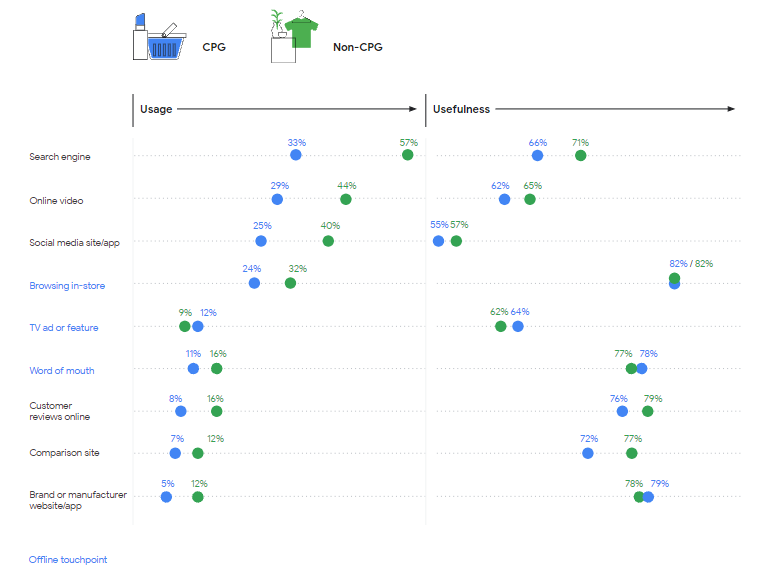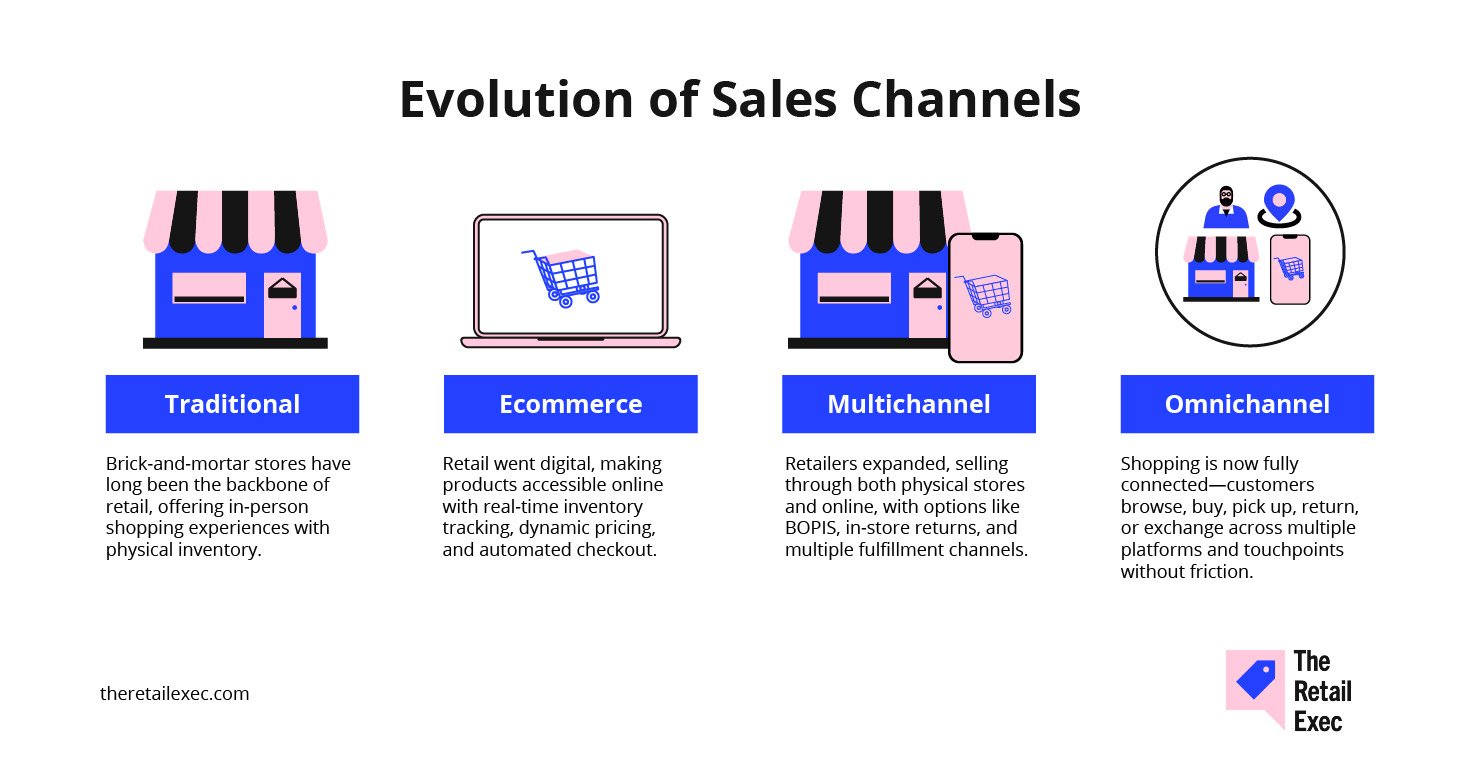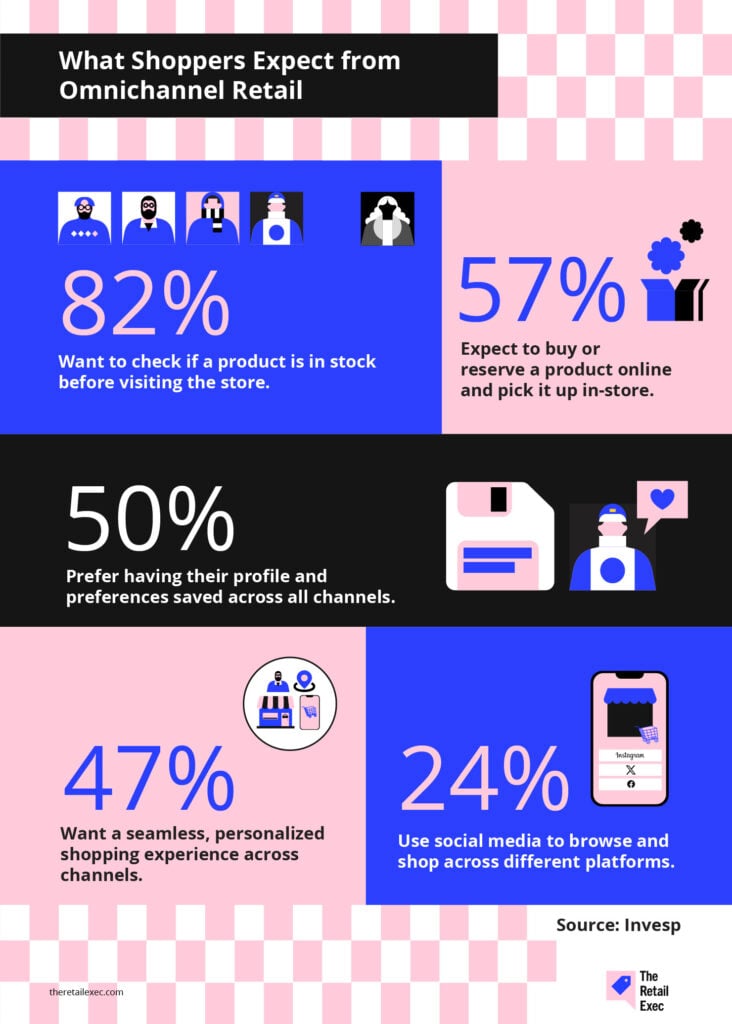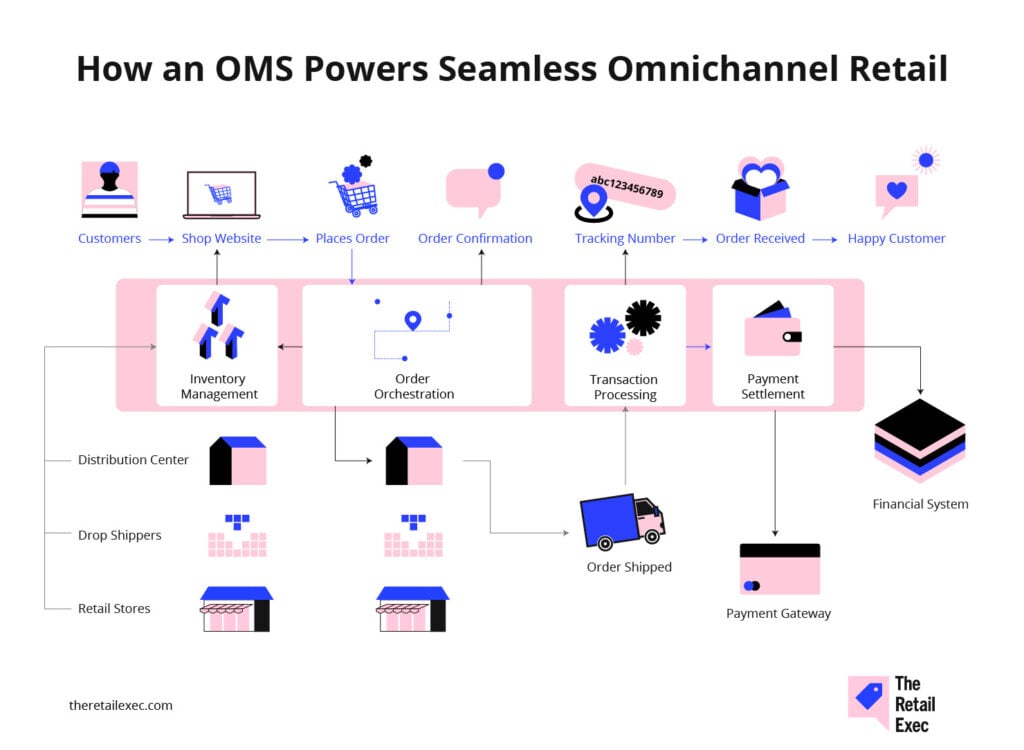Juggling Sales Like Octopus Tentacles: Balancing online and offline sales requires flexibility and coordination, much like an octopus managing multiple tasks simultaneously. Effective management can maximize profits for ecommerce businesses.
Sync Up Inventory Like a Pro DJ: Keeping inventory in sync across all channels ensures that customers receive accurate information and have a seamless shopping experience, preventing frustration and lost sales.
Customer Experience is King, Crown It: Offering a consistent and exceptional customer experience across platforms is crucial. Happy customers are more likely to return, helping to build a strong and loyal customer base.
Data Insights are Your Crystal Ball: Using data insights from both online and offline channels can reveal trends and help tailor marketing strategies, leading to more personalized customer engagement and higher sales.
Adaptability—Your Secret Superpower: Staying adaptable and ready to adjust strategies is vital in the fast-paced world of ecommerce to keep up with shifts in consumer behavior and market trends.
If you’re an ecommerce store owner with both offline and online sales channels, you kind of have to be a very well-coordinated octopus.

One tentacle fields customer inquiries, another updates the website, and a third manages in-store displays. But soon, you’ll feel that this octopus isn’t doing much except constantly putting out fires.
Inventory discrepancies lead to stockouts and angry customers.
Fulfillment delays create logistical “workmares.”
And the cost of maintaining all these disparate systems is starting to pinch.
You're spending more time reacting to problems than proactively growing your business. You're trapped in a cycle of chaos, and your customers are feeling the effects.
Something needs to change.
So, let’s change it—right here and right now—by taking a leaf from other successful octopi entrepreneurs on how to set up omnichannel order management in six painless steps.
What is Omnichannel Order Management?
A centralized system, omnichannel order management orchestrates and completes customer orders from all sales channels: online stores, physical locations, mobile apps, social media, and third-party marketplaces.
Omnichannel gives you one simple picture of your whole business—inventory, orders, customers—so shopping is smooth and consistent, however and wherever your customers choose to shop.
What are the key components of omnichannel order management?
Wipe the sweat from your brow with a tentacle and be ready to be wowed by the power of omnichannel:
- Real-time inventory visibility. This is the foundation. Imagine knowing exactly what you have in stock, whether it's in your warehouse, your online store, or any of your physical locations. Real-time visibility empowers you to optimize inventory levels, prevent stockouts, and fulfill orders efficiently from the best possible location.
- Centralized order processing. Omnichannel brings everything together into one central hub. Whether a customer buys online, in a physical store, or through your mobile app, the order is processed through the same system. This simplifies order management, reduces errors, and provides a single view of all customer activity.
- Seamless integration across channels. Omnichannel connects all your sales channels—online, offline, mobile, social—creating a unified and cohesive experience for your customers.
- Consistent customer experience. Your customers receive the same level of service, the same product availability, and the same brand messaging, no matter how they choose to interact with your business.
- Flexible fulfillment options. This is where omnichannel truly shines. This lets you give customers choices like in-store pickup, curbside, and different shipping methods—super convenient!
The Rise of Omnichannel Order Management: A (Very) Brief History
Think back to how you shopped in the days of yore. You'd wander into your local bookstore, browse the shelves, and that was that. Traditional order management, perfectly suited for a single, contained channel.
But times have changed.
Think about how you shop today. You might start with a Google search, watch a few product reviews on YouTube, check out what your friends are saying on social media, and maybe even pop into a store to see the product in person.
That's the modern shopping journey, and Google's post-pandemic research confirms it.
Consumers are using a mix of online and offline touchpoints—search engines, videos, social media, in-store browsing, and even good ol’ word-of-mouth.

It's a complex web of influences. (If you think about it, shoppers are a different kind of octopus on the other side of the screen.)
This explosion of touchpoints led to the rise of multichannel retail.
Businesses realized they needed to be where their customers were, so they expanded—online stores, mobile apps, social media presence.
But often, these channels operated like separate kingdoms, disconnected and siloed.

And that's where the omnichannel revolution comes in. Because customers aren't thinking about channels; they're thinking about experiences.
They want to start their research online, browse in-store (still a top touchpoint, as Google found!), and then maybe buy later on their phone.
They expect a consistent experience, regardless of how they interact with a brand.
We—as customers—have changed. We’re fluid, moving across different offline and online touchpoints at warp speed.
And the magic of omnichannel order management is its ability to track and connect these dots in real time.
This brings us to…
The Benefits of Omnichannel Order Management
“We had a 50% increase in orders during our most recent holiday sale,” says Ben Schreiber, CMO at Latico Leather.
We were able to prevent overselling, maintain precise inventory, and avoid a customer service crisis because of our OMS.
The outcome was a 20% rise in return business as a result of their confidence in our ability to fulfill their orders.
When everything goes well, it feels like magic, but really, it's not.
What does this really mean for both customers and businesses?
How it benefits customers
Think about the last time you were really happy with a shopping experience.
Was it easy? Convenient? Did you feel like the company understood you? That's what omnichannel delivers.
Say you're browsing online late at night and find the perfect pair of shoes. You see they're available at your local store, so you order them for pickup the next day.
No shipping fees, no waiting. Or maybe you buy a sweater online, but when it arrives, it's the wrong size. No problem—you pop into the store for a quick and easy exchange.

That's omnichannel in action. It's about making shopping effortless, putting you in control, and creating a truly satisfying experience.
How it benefits business owners
Now, imagine you're running that business 👆🏼
Omnichannel isn't just about happy customers; it's about making your life easier, too. No more pulling your hair out over mismatched inventory—you know exactly what you have, where it is, and can avoid stockouts.
Think about all the time and money you waste on manual, static processes.
Omnichannel streamlines everything, from order fulfillment to returns, saving you both time and resources.
And because you have a unified view of your buyers, you can personalize your marketing, anticipate their needs, and meet customer expectations.
And how’s this for a kick in the pants? On average, companies that use omnichannel customer engagement strategies retain 89% of their customer base.
Win-win, baby.
How Omnichannel Order Management Works
Let’s do a quick step-by-step overview of the process so you know where the puzzle pieces fit in when we talk about implementing an omnichannel strategy.
Step 1: Order capture. Our journey begins when a customer makes a purchase.
This could happen through any touchpoint: your ecommerce website, a marketplace like Amazon, a physical store, a mobile app, or even Instagram.
The omnichannel system captures the order details, regardless of where it originated.
Step 2: Centralized order routing. Once the order is captured, the system intelligently determines the best way to fulfill it.
This involves considering factors like inventory availability, shipping costs, delivery time, and customer preferences. The system might route the order to the nearest store with available stock, a regional warehouse, or even directly from a supplier.
The goal is to get the product to the customer as quickly and efficiently as possible.

Step 3: Inventory synchronization. Throughout the process, inventory levels are constantly updated in real time.
This guarantees that everyone—from your sales team to your warehouse staff—has access to the most accurate inventory information. All inventory levels are automatically adjusted after an order is placed, so there's no overselling.
Step 4: Fulfillment and delivery. Based on the order routing decision, the chosen fulfillment location picks, packs, and ships (or prepares for pickup) the order.
The system manages the entire process, from generating shipping labels to tracking deliveries. Customers receive updates on their order status, keeping them informed every step of the way.
In addition to providing customers with a variety of fulfillment options to choose from, omnichannel delivers orders at the time and place of their convenience, whether by curbside delivery, in-store pickup, or home delivery.
Step 5: Post-purchase activities. Hang on, now. The journey doesn't end with delivery.
Omnichannel also streamlines post-purchase activities like returns and exchanges. Customers can typically return items to any of your physical store locations, regardless of whether they bought the product online or in-store.
The system automatically updates inventory levels and processes refunds or exchanges, creating a seamless shopping experience for the customer.
It also collects data about returns, which can help improve product offerings and reduce future returns.
We’ve done some vetting for you—here are our top 10 picks of the hottest solutions on the market:
Start with our list of top 10 omnichannel order management solutions:
Shortcut your research with our top 10 vetted warehouse management solutions:
The Ink-Credible Truth
The right tech is less “panic button” and more “power-up.” Because at the end of the day, omnichannel isn't about being everywhere at once—it's about making it look like you are.
Here’s the scoop:
- Turn that murky inventory situation into crystal-clear visibility.
- Let one brainy system run the show.
- Give your customers more delivery options.
- Train your team until they can orchestrate orders in their sleep.
Time to upgrade your tentacles. 🐙
The world of ecommerce moves fast—and so do you. Subscribe to our newsletter with the latest insights for ecommerce managers from leading experts in the industry.
Omnichannel Order Management FAQs
We promised you a 101 guide, so here’s everything else you need to know.
How can small businesses implement omnichannel practices without significant investments?
Omnichannel retail isn’t just for the big players. Small businesses can start small and scale up.
-
- Focus on integrating your online and offline presence. For example, offer buy online, pick up in-store (BOPIS), or curbside pickup options.
-
- Start with accurate inventory management. Invest in solid automated software early, so it doesn’t cost you later.
-
- Leverage free or low-cost tools. Especially for social media marketing and customer communication.
Prioritize a smooth customer experience and don’t get bogged down in building a huge tech system right away. Smart forecasting will help you manage stock levels effectively, minimizing unnecessary investment.
How do cultural and regional differences affect omnichannel strategies?
Consumer preferences, shopping habits, and technological adoption vary across different regions.
For example, mobile commerce might be more prevalent in some markets, while others may still rely heavily on traditional retail channels.
A one-size-fits-all approach rarely works in omnichannel order management—localization is key. Consider local regulations and supply chain infrastructure when designing your strategy.
What’s the role of a physical store in an omnichannel strategy, especially with online retail growth?
A physical store can serve as a showroom, fulfillment center, and a customer service hub.
Your physical store is a big part of your supply chain, not just some separate thing. Connecting your store’s workflows with your online systems is key for successful local fulfillment.



